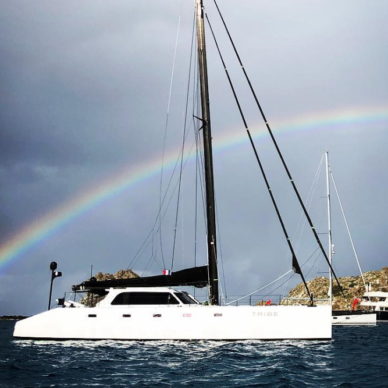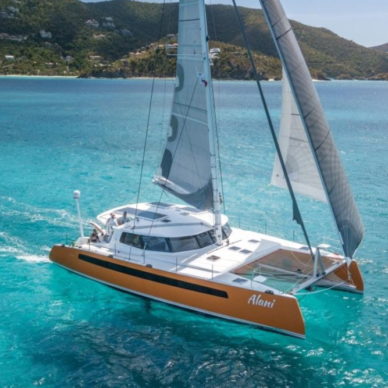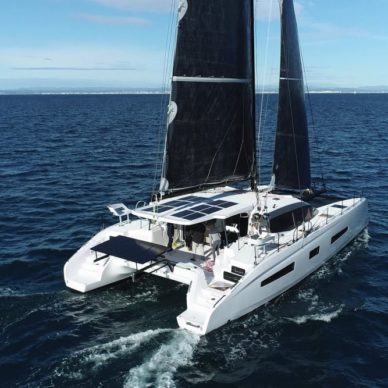Description
 Where do we put the HH OC50 on Katamarans? This Morrelli & Melvin designed yacht is a sister to their high performance yacht, the HH50 and is the first model to come out of the Ocean Series line.
Where do we put the HH OC50 on Katamarans? This Morrelli & Melvin designed yacht is a sister to their high performance yacht, the HH50 and is the first model to come out of the Ocean Series line.
E-Glass and Fixed Keels
The main difference is in how she is built. HH use e-glass on this boat with carbon reinforcements in high load areas. The daggerboards have been switched for winged fixed keels and instead of a carbon composite mast, boom and rigging, she has alloy (there is an option to go carbon). The hull shape is the same, with an ample interior, and luxurious fittings.
This keeps the cost down and makes her more robust: she’s been designed with circumnavigating couples in mind who are looking for a boat that is simpler to sail short-handed and will take a knock or two. Instead of the twin helms on the HH50, the OC50 has a single helm station with all of the lines running back. This boat sits between the Kinetic KC54 and 50 foot cruising catamarans like the FP Saba 50
Many thanks to Multicats International, the European Agents for HH, and of course the owners of Seabbatical for showing us around the #1 hull and taking us out on a test sail.
A Performance Boat
We have included this catamaran in our Performance Catamarans section, but bear in mind that HH also make a more highly tuned version. But this is still a fast boat with a powerful sail plan and a high end finish. If you dream of owning an HH catamaran but can’t stretch your budget to their 66 footer, now you have an option.
The SA/D ratio doesn´t hit the levels of a Looping 50, (another fixed keel performance catamran) but it´s above average.
You can´t really call her a volume production boat. HH will be making around 4 of them a year. In terms of performance, we’d say she sits somewhere between an Outremer and a Nautitech. Read our Outremer 45 review if you are interested in boats in that category, but bear in mind the 51 is closer comparison.
Pros
- She’s fast and comfortable. Those Morrelli & Melvin shaped hulls slip cleanly through the water and a lot of work has gone into distributing the weight in the optimum way. You can expect to be just below true wind speeds with the right sails up.
- The price of an OC50 will be pitched around the same level as a Outremer 51 or a Catana 53. For the same money, you´ll get a high performance machine with a far superior level of finish. This is a luxury performance cat
- The OC50 is a semi-custom boat. You can add or take away as much carbon as you like to hit your performance/cost sweet spot
- This is a simpler boat for a couple to sail than the HH50. There are no daggerboards to worry about (just keels with winglets) and a single helm station. I wouldn’t call the OC50 a simple yacht to sail, but she’s been designed for a couple to handle. With a bit of practice.
- The finish of this boat and the attention to details hit a very high level. Examples include davits that are custom built to your tender
- I prefer the profile of the single helm station to the twin helms on the HH50. This is a pretty boat.
Cons
- With fixed keels instead of daggerboards, you are going to lose some performance upwind, especially in lighter winds. Having said that, those winglets on the keels help the boat to point upwind pretty well, and when the wind picks up you won´t notice much difference.
- With the use of e-glass to keep the cost down, this boat is heavier than a HH50 and that will affect her performance. I wouldn’t call this a slow boat though. We are talking relative, right?
- I thought the saloon could do with more ventilation for a boat in this price point. The forward starboard window is pretty small, for example. I am guessing you can customise this.
- The huge aft windows in the cabins make for a spectacular view, but I’d want more privacy personally. Having said that, the owners were still waiting for their aft blinds. I´d worry about big waves smacking into all of that glass on an ocean crossing, but there are washboards that fit into the top of the transom steps.
- With that semi-raised helm, the boom is pretty high. That means the centre of effort of the mainsail is higher than other performance cats and it´s more difficult to get to your mainsail. We are not in flybridge boom height territory though.
- You access the helm via the side deck which could leave you exposed in heavy weather. You can nip up from the starboard daybed in really rough weather if you don’t mind a bit of dirt on those fancy leather cushions.
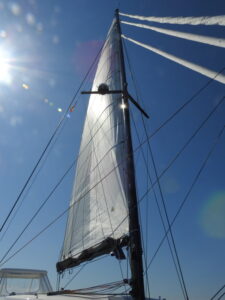 With the OC50, HH have developed a tough, fast, luxurious ocean cruiser that has many of the features from the high performance HH range at a lower cost and with simpler systems for a couple more interested in cruising fast than winning yacht races.
With the OC50, HH have developed a tough, fast, luxurious ocean cruiser that has many of the features from the high performance HH range at a lower cost and with simpler systems for a couple more interested in cruising fast than winning yacht races.
With a few trade offs here and there that have had minimal impact on performance and a decent impact on ease of sailing, they have developed a catamaran that offers good performance and high levels of comfort without sailing to the extremes.
The E-glass in the hull, deck, superstructure and interior paneling, saves cost compared with carbon. In highly loaded areas such as the cross beams, carbon is used to ensure a tough, rigid boat. The standard mast is aluminium and not carbon (although you can opt for the lighter material, but there is an associated cost of course).
According to the specs, the OC50 is around 1 tonne heavier than the HH50, but this difference can be reduced if you go for more carbon. The owners of Seabbatical assured me that he´d minimised the excess weight to around 500 kg with their carbon options.
Sailing
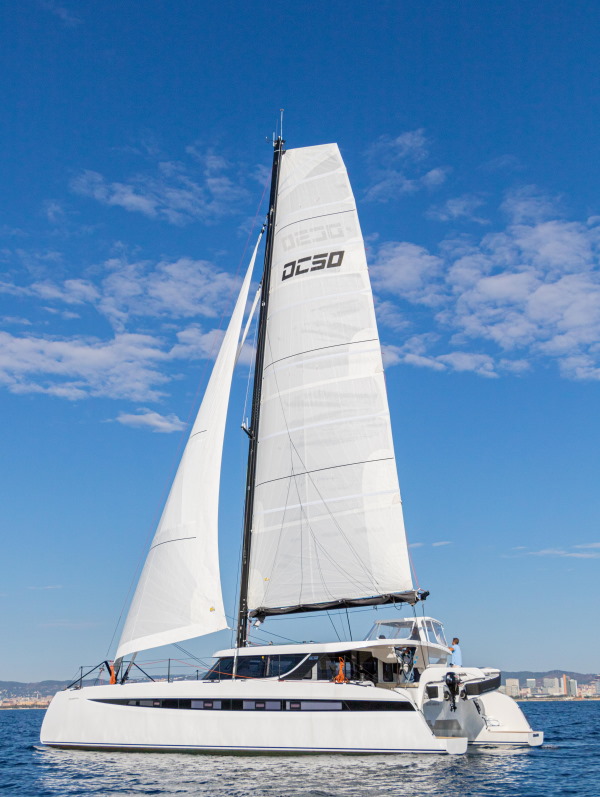 Powered Like an HH50
Powered Like an HH50
The OC50 comes with an ample 81 m2 of mainsail (or 83 m2 with the square top option) with a furled 45 m2 self-tacking jib and 57 m2 overlapping jib (which they call the solent). The overlapping jib, which is optional, is good up to the first reef on the mainsail (18-20 knots true?) at which point the sail handling gets even easier with the self tacker.
Seat Up for Short-Handed Sailing
All the reefing lines and sheets come back to two electric winches at the single helm, and your furling lines run back down the port side. You can lead the furling line back to the starboard cockpit winch under the helm station if you like, or just run it onto the cockpit winch to port.
Other sail options include a fractional reacher that is flown off the bowsprit, plus an spinnaker and storm jib (both optional).
The owner of the #1 hull has invested in a parasailor for downwind sailing. I´d love to see this up – this sail can be kept up from 4.5 kts – 20 kts apparent and 70 – 180 AWA. That should push Seabbatical along at a rate of knots!
At 13.2 tonnes lightships, the OC50 gets going quickly and cuts nicely through the water with those axe bows.
Unfortunately during our test sail we had very little wind, but the OC50 will approach true wind speeds in a breeze.
Living Space & Finish
This is where the OC50 puts some clear blue water between herself and the competition. The quality of the furnishings is superior to comparable cats in the same price range – they have tried to match the level of finish that you see in the HH line and in the main they have succeeded. She feels like a very spacious 50 footer with the sliding doors between the aft cockpit and the saloon open.
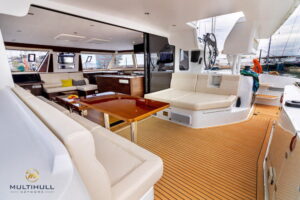 High Quality Finish and Fittings
High Quality Finish and Fittings
Many catamarans with a mid position helm feel cramped aft, but with the helm steps running around the starboard side deck, that´s not the case on the OC50. There’s a big day bed on the starboard side (you can jump up to the helm from here if you need to), and a long sofa on the port side connects to another in the saloon. The U-shaped galley on the starboard side is spacious with plenty of storage space. It looks like a safe place to be in bigger waves.
Forward amidships is another seating area with fridge and freezer drawers to starboard. And to port is a great looking corner navigation station with good visibility.
Down Below
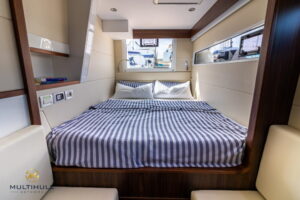 The high quality finish continues in the hulls with all the cabinetry cored to reduce weight. In Seabbatical, the #1 hull, the port side is the Owner´s Hull with a light spacious cabin aft (check out the picture book window at the end of the master berth) and a full size head and shower room forward.
The high quality finish continues in the hulls with all the cabinetry cored to reduce weight. In Seabbatical, the #1 hull, the port side is the Owner´s Hull with a light spacious cabin aft (check out the picture book window at the end of the master berth) and a full size head and shower room forward.
Happy Guests
In the starboard hull, the 2 cabins have been cleverly split with their own steps down from the saloon. Each cabin has their own head and a shared “jack and jill” shower in between. It’s a clever use of the space and it feels big.
Storage Space
The 2 forepeaks in the boat give you lots of storage. These are customisable: on Seabbatical the owner has installed a dive compressor and scuba tank rack in one and left the other for sail storage.
FAQs
How much does an HH OC50 cost? What’s the list price?
This is heavily dependant on the options you go for and how much carbon you want on the boat. These are semi-custom catamarans, but to give you an idea, HH are pitching the OC50 at around the Outremer 51 or Catana 53 price range. So let’s say around €1.3 million would get you a pretty fantastic machine. The cost is considerably lower than an HH50.
Why No Daggerboards? I thought this was a Performance Cat?
HH have made the decision to simplify the systems on the OC50 to make it easier for a couple to sail the boat over long distances. Fixed keels are less complex than boards and arguably safer on long cruises (in the event of a grounding for example). The winglets on the keels help the OC50 to point respectably into the wind. Studies have shown that the performance difference drops away when the wind picks up in any case: you will notice the biggest difference going upwind in light airs. But we would still call the OC50 a performance boat based on her Sail Area to Displacement ratios.
Summary
The HH50 is a clever design and I would think that the traditional performance cruising catamaran manufacturers are looking over their shoulder at this one. The single helm station works well for short handed sailors and arguably she looks sleeker than the HH50 from some angles.
She has all the looks of a Morrelli and Melvin speed cat, with the kind of finish you would expect from HH at a comparable price to the competition: a sturdy, blue-water, luxury semi-custom cruiser with a lower cost and build time.
Next up for HH? The OC56 – a bigger boat with a flybridge.
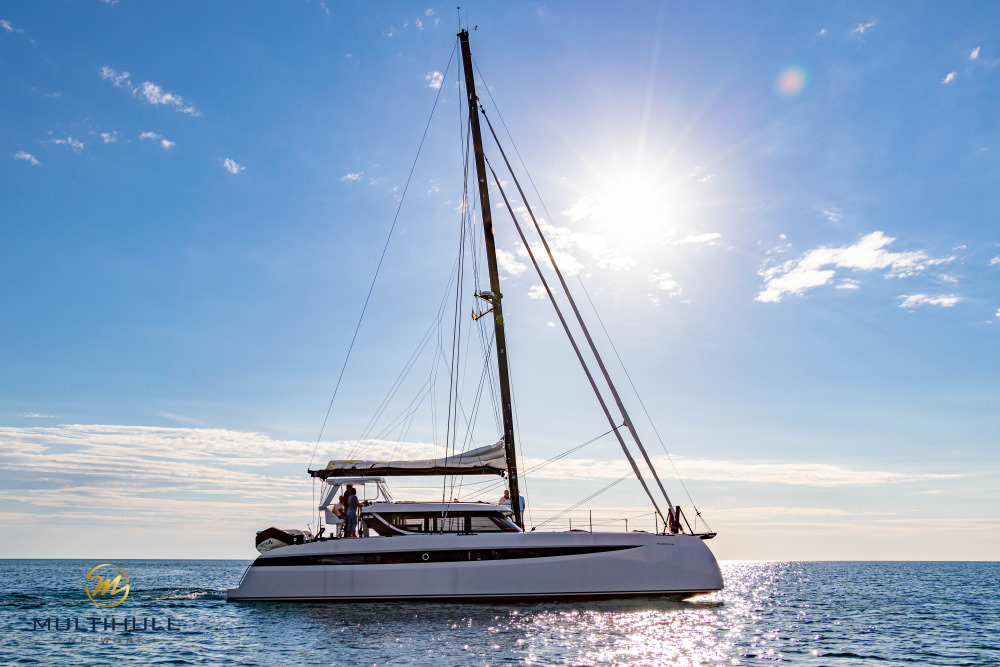
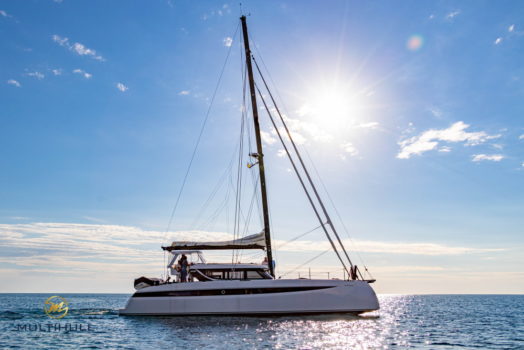
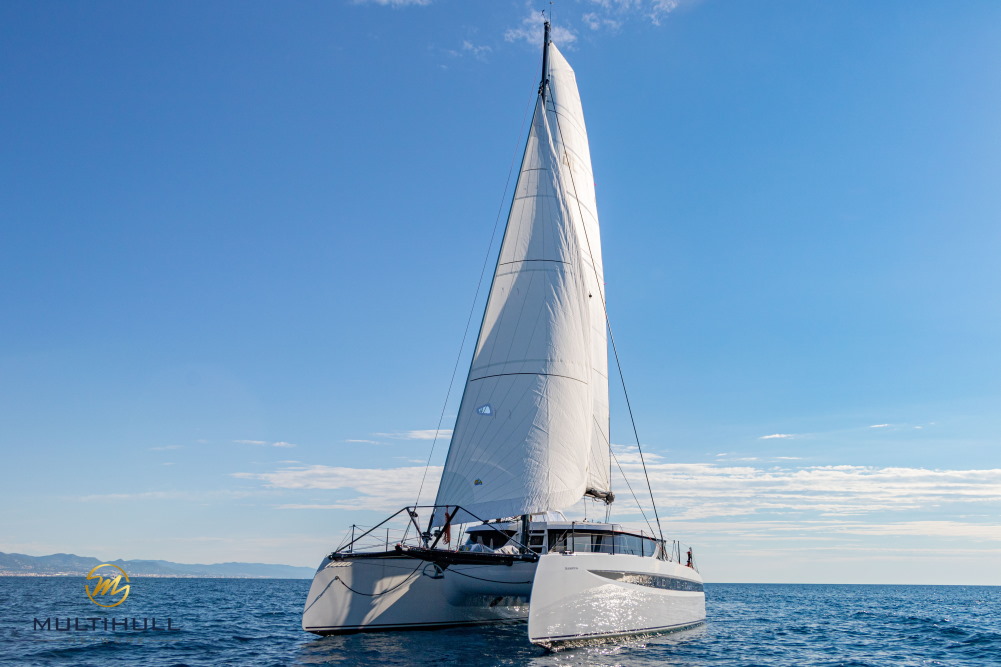
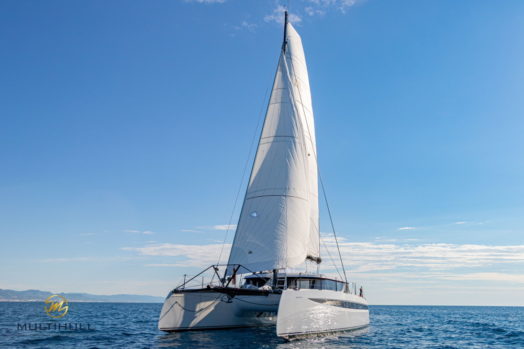
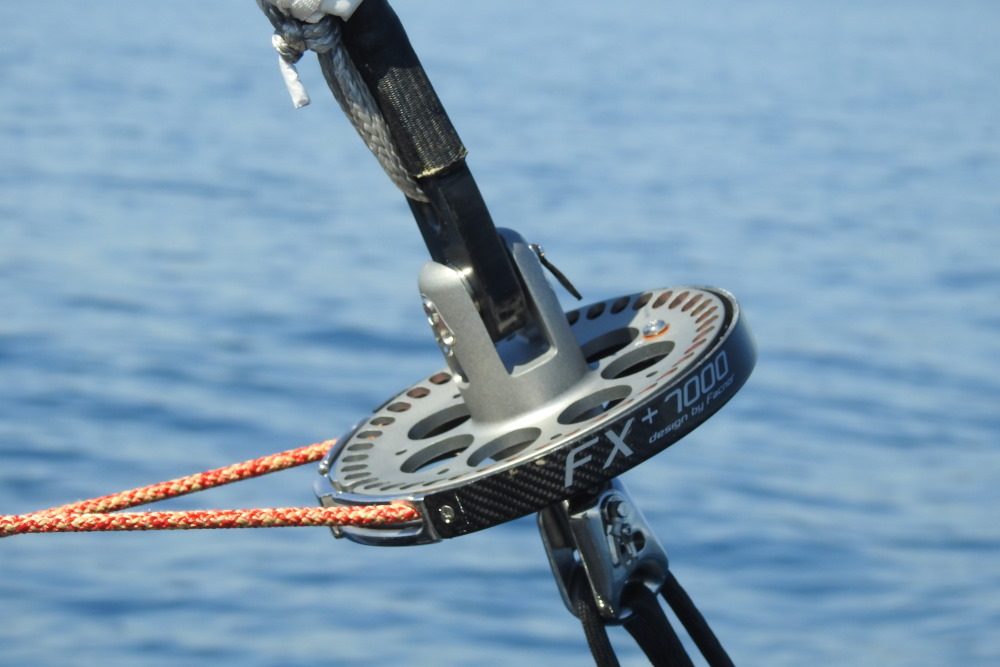
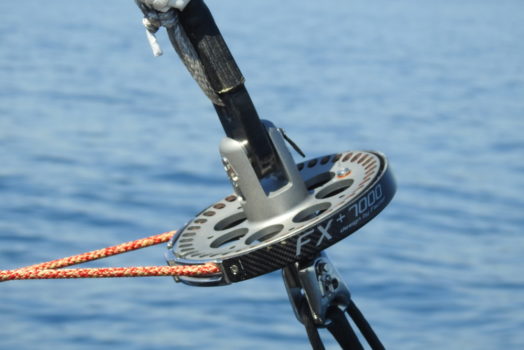
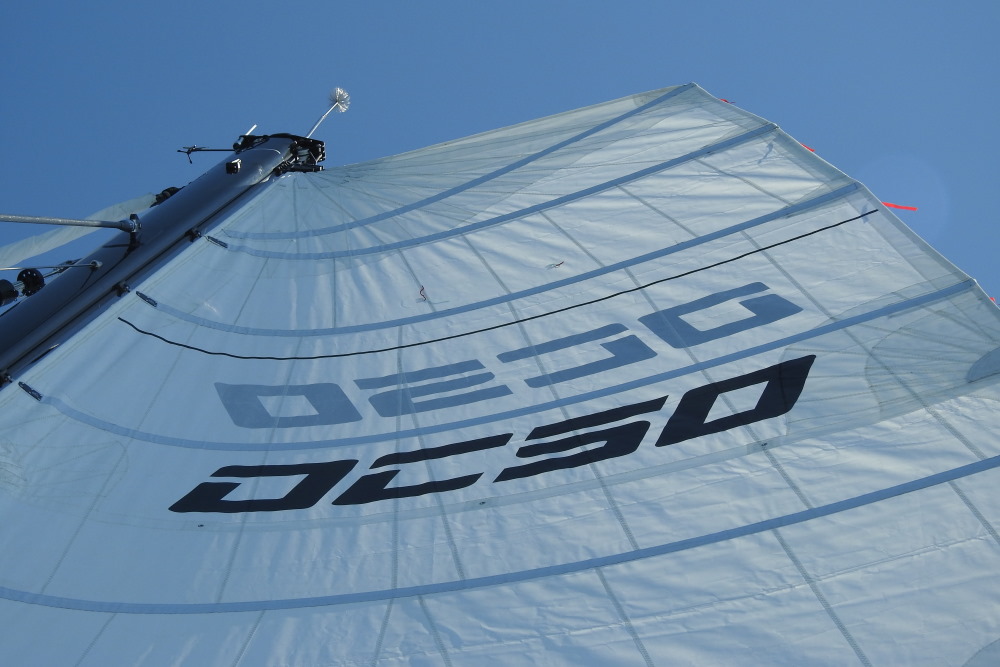
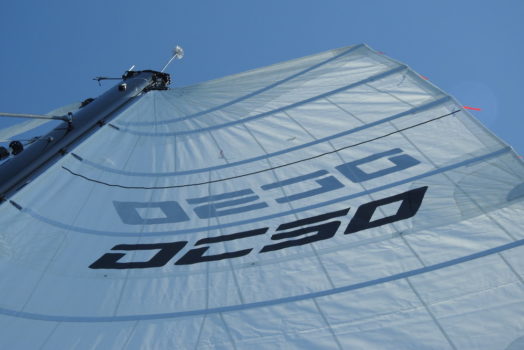
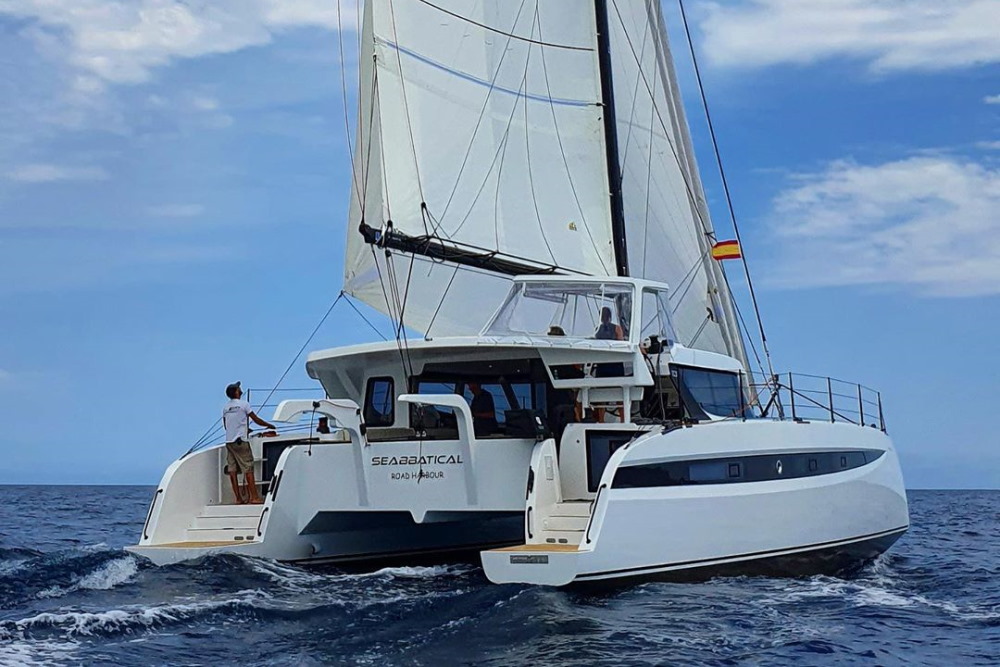
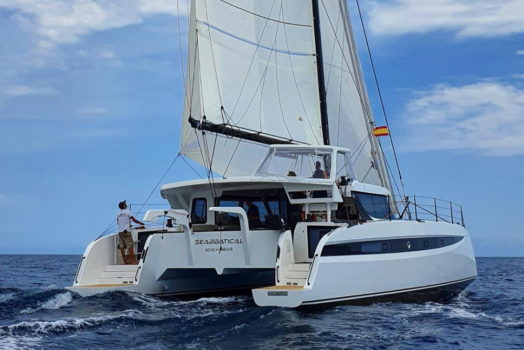
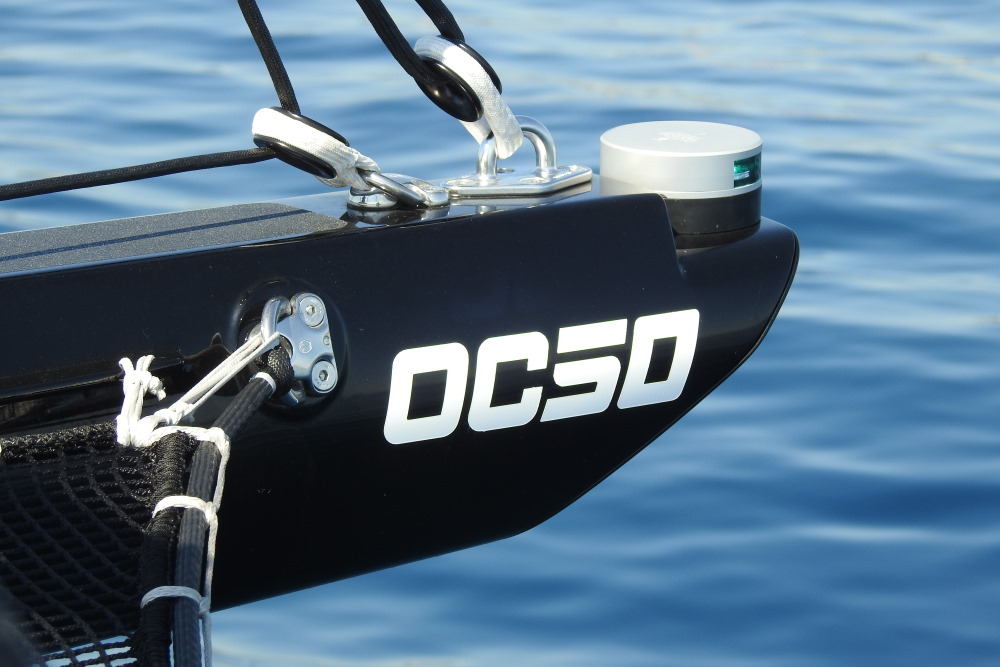
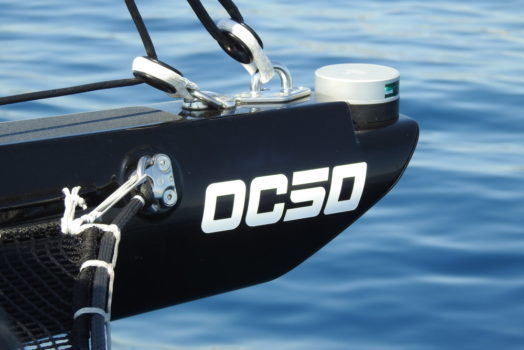
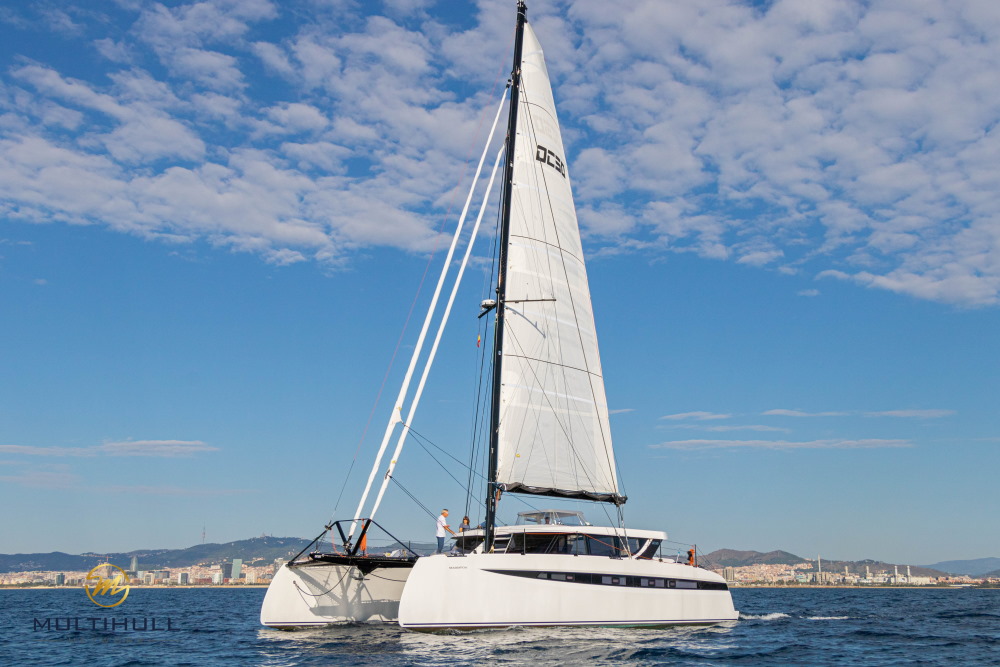
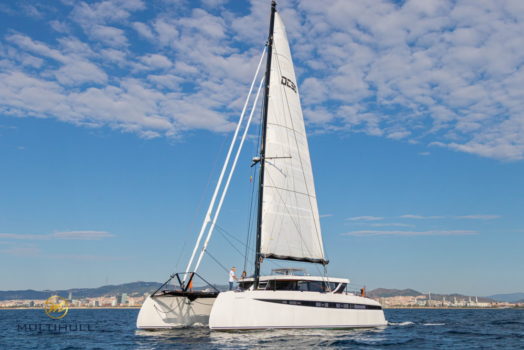
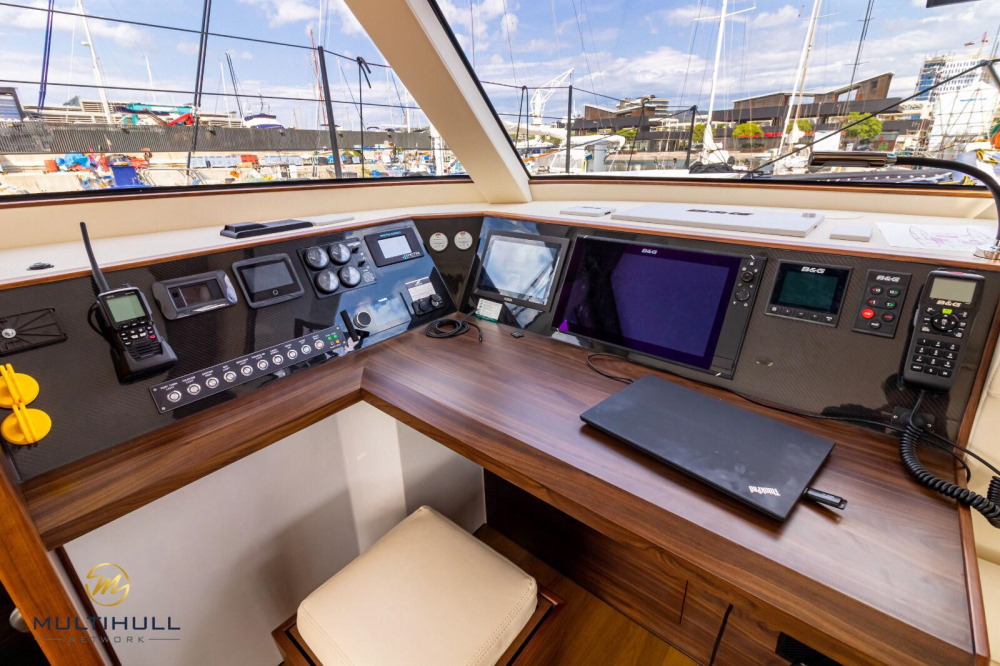
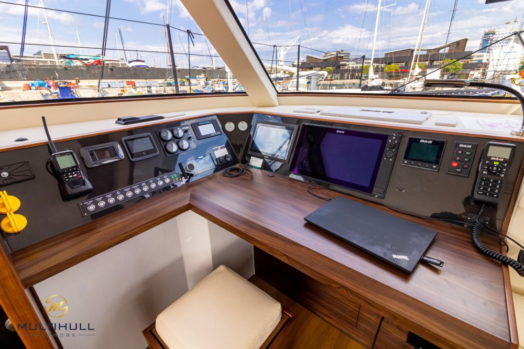
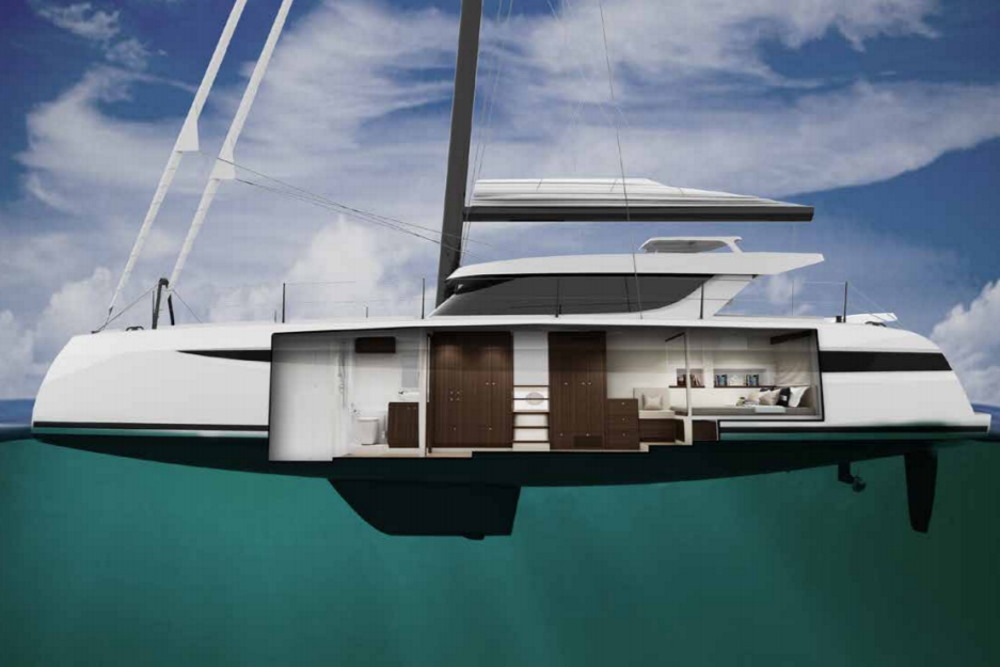
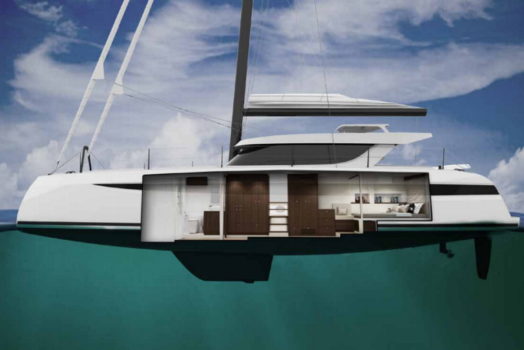
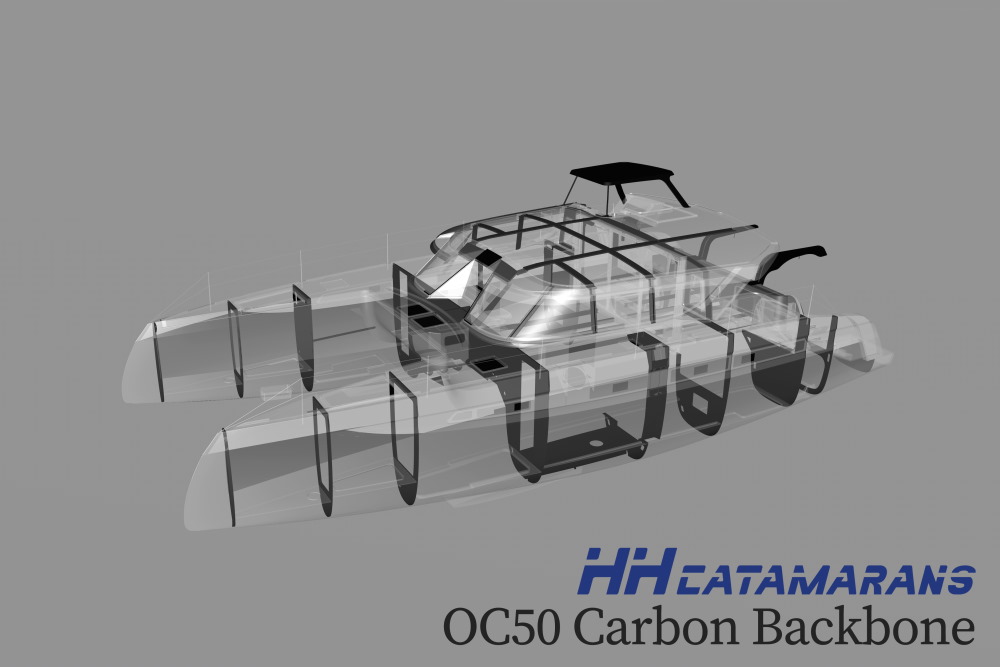
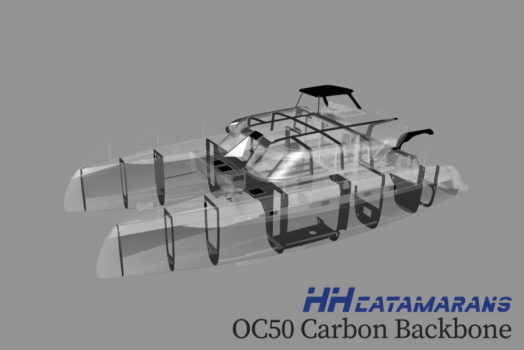
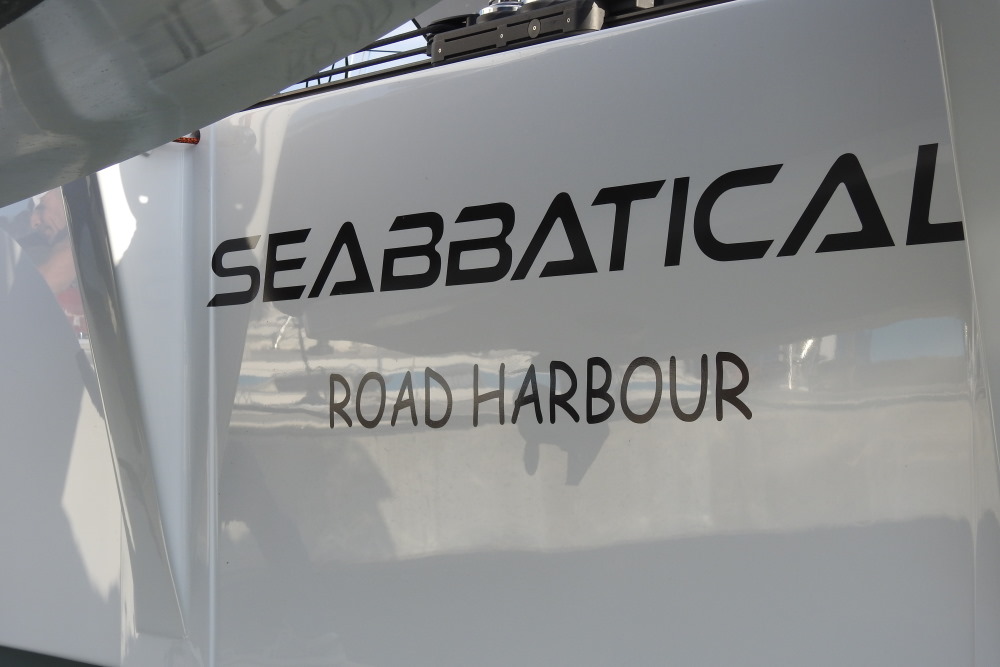
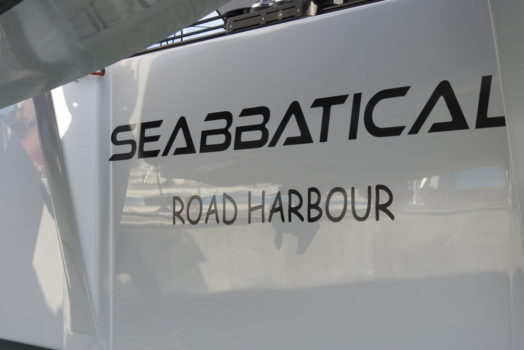
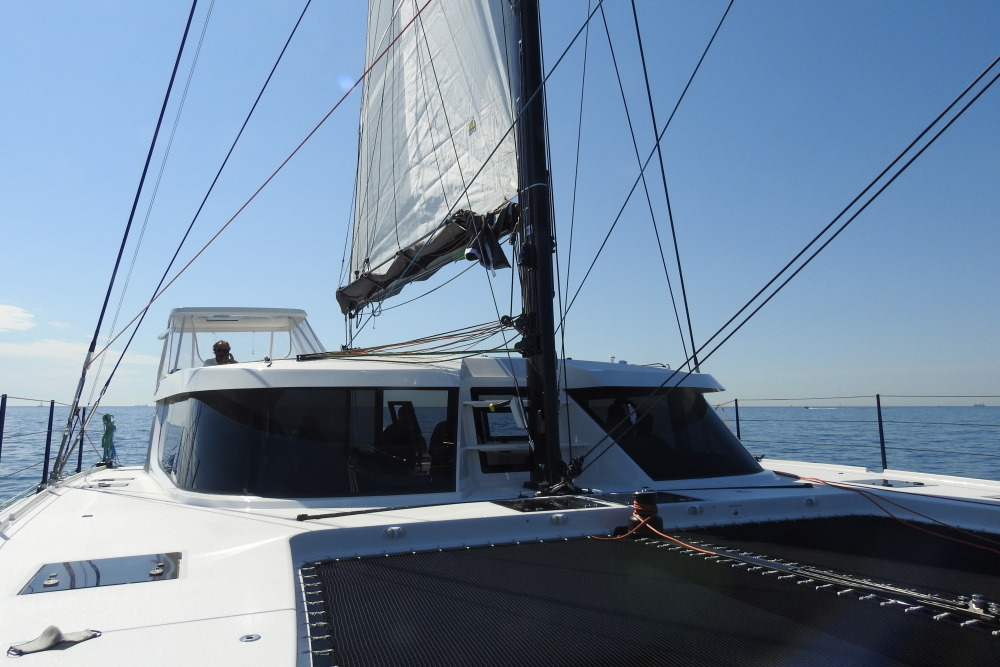
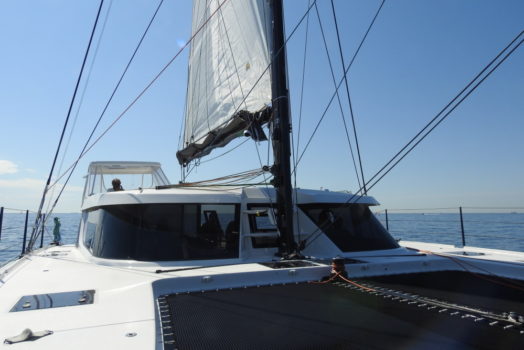
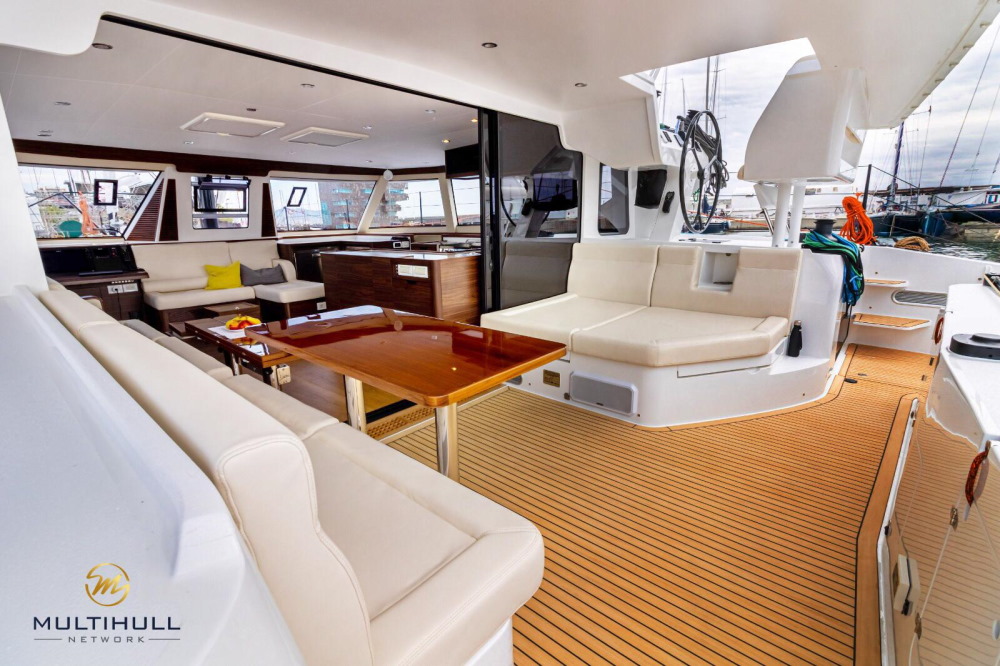
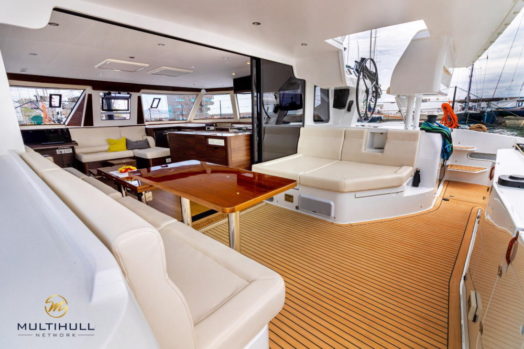
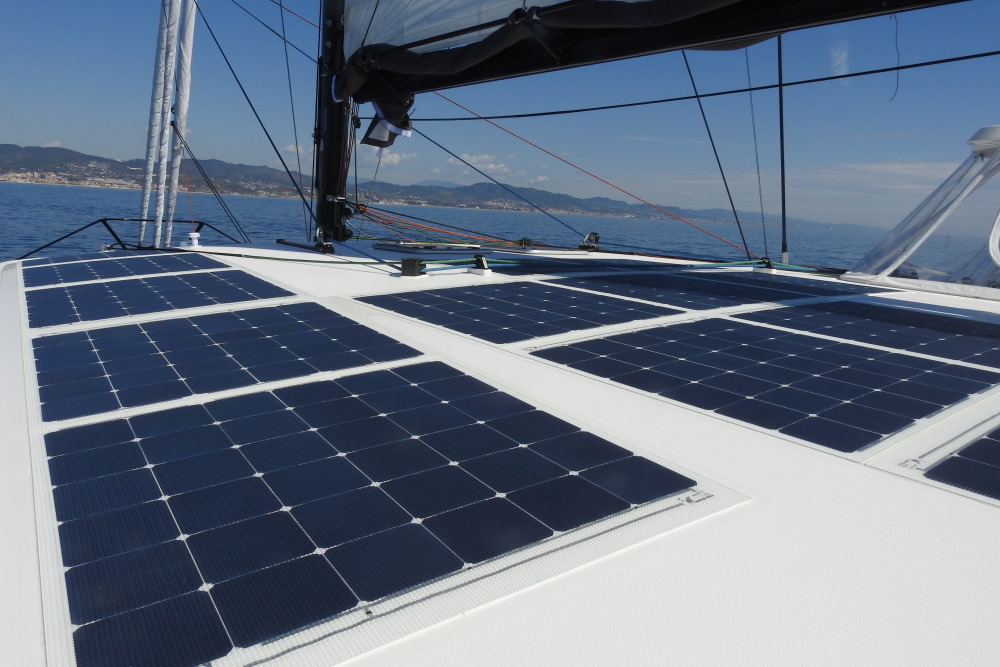
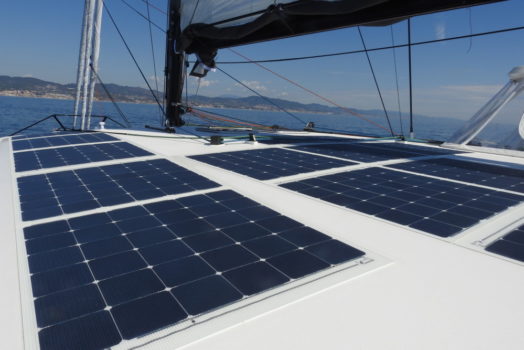
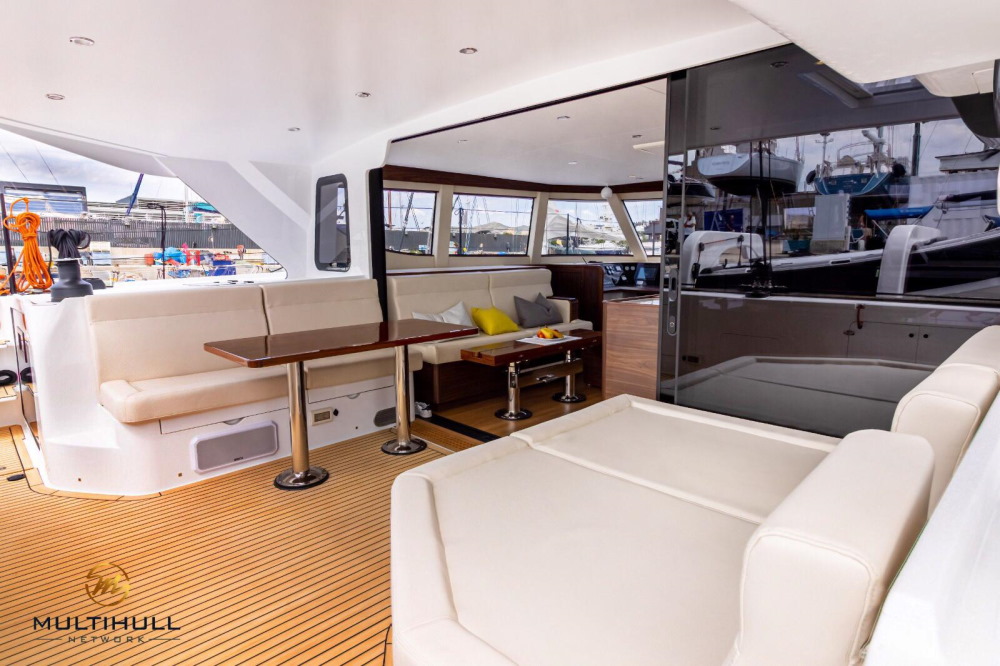
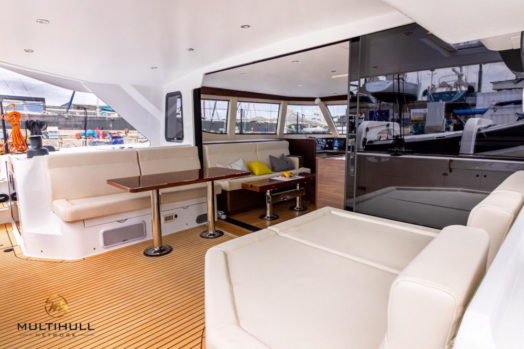
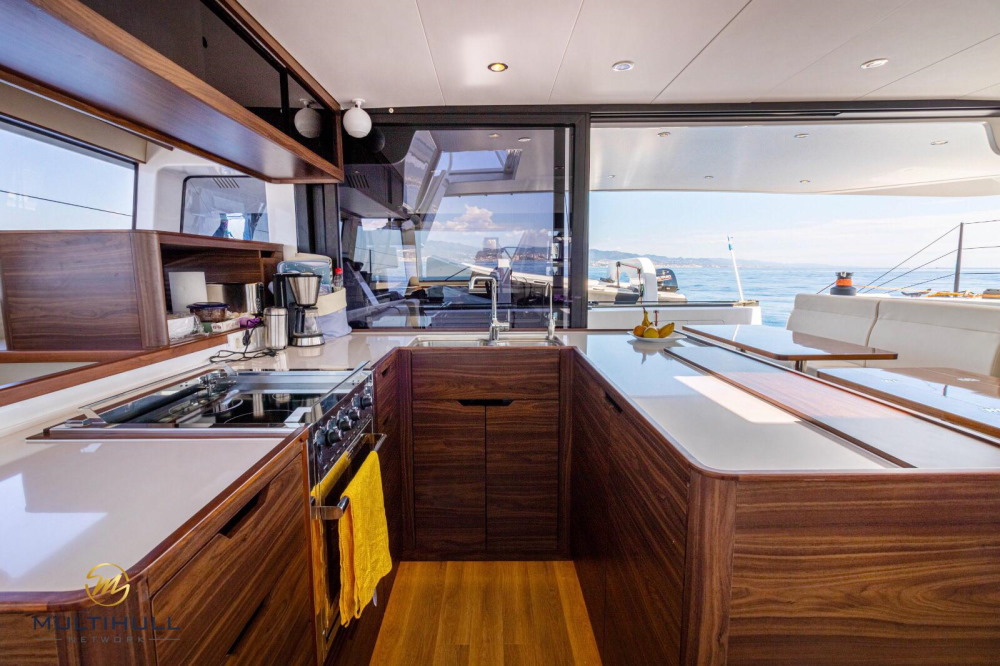
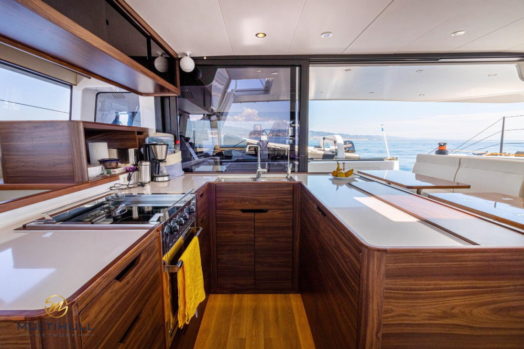
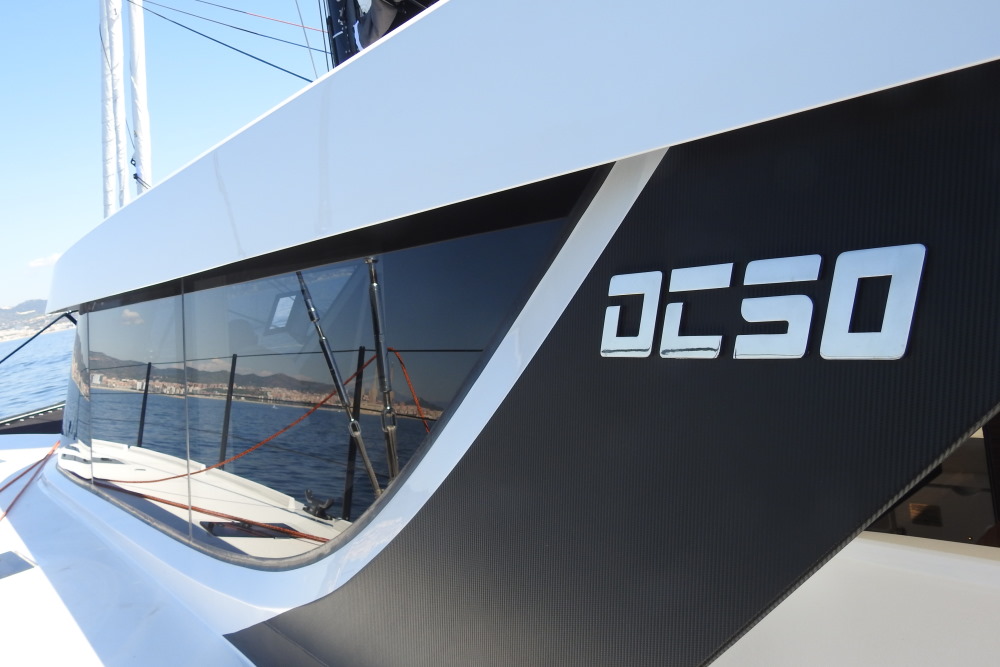
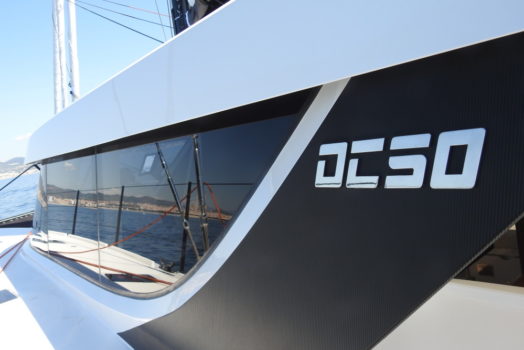
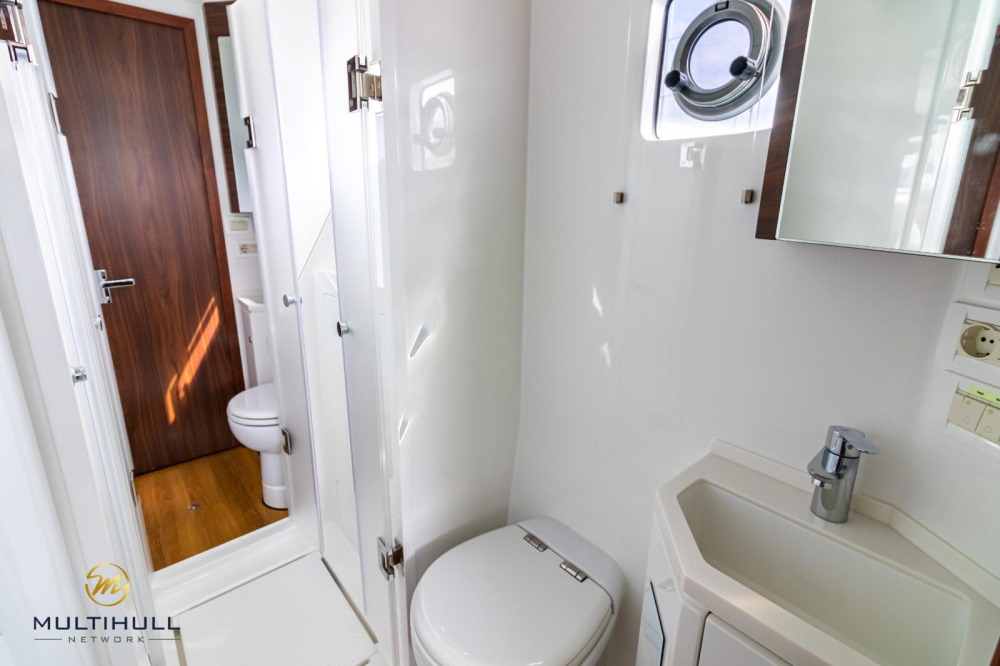
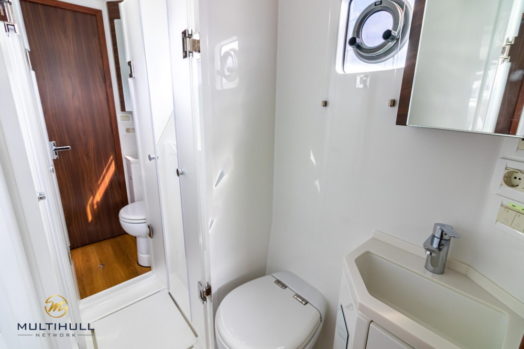
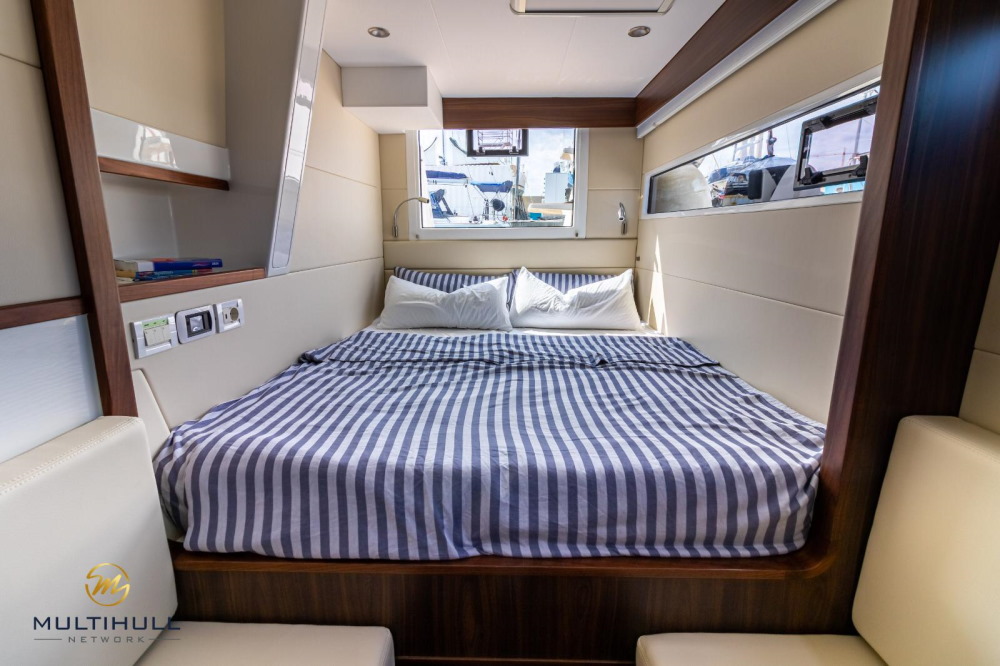
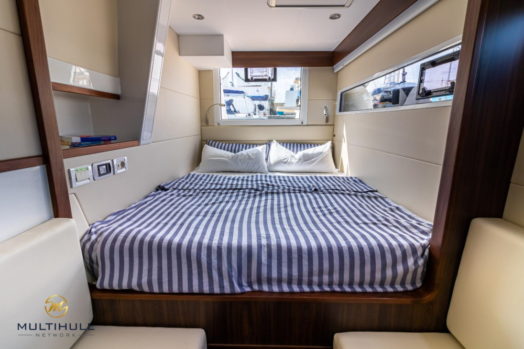
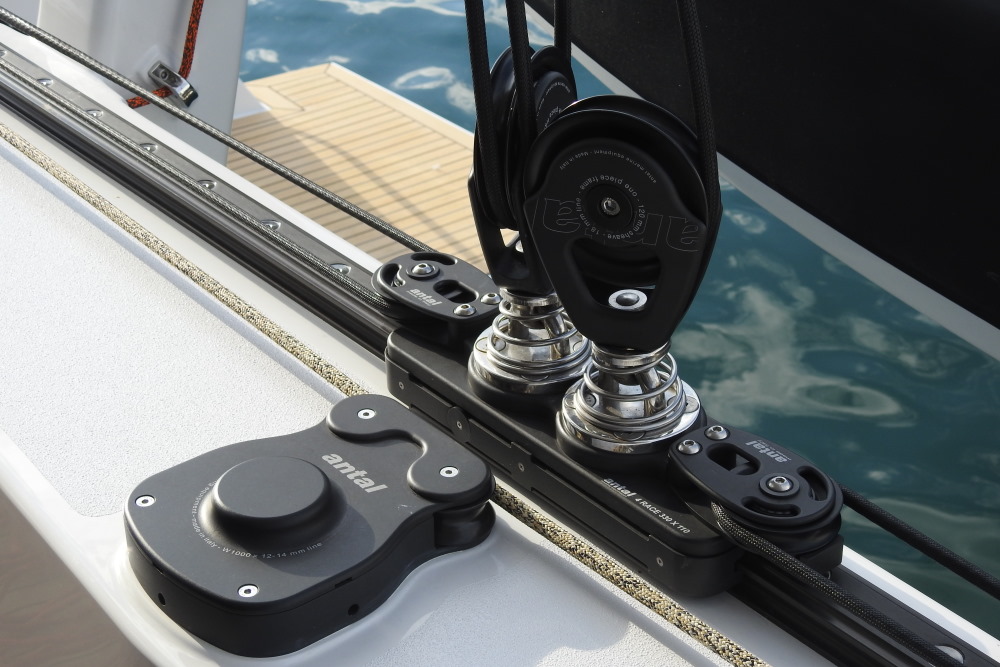
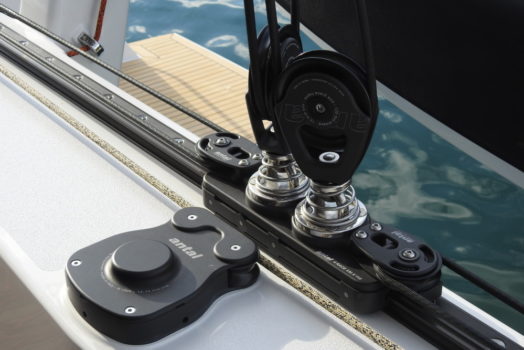
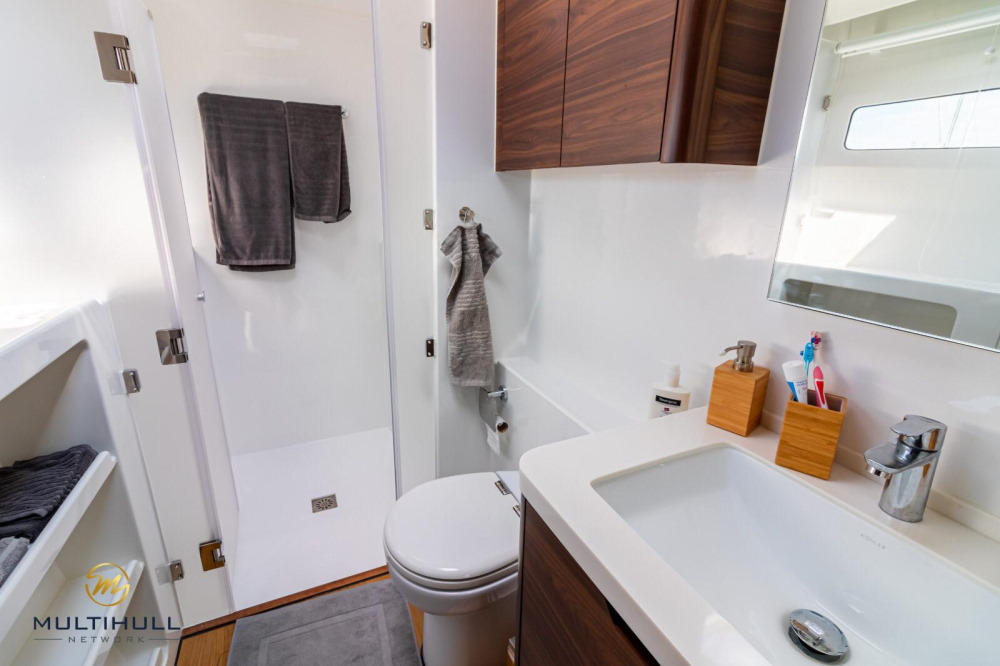
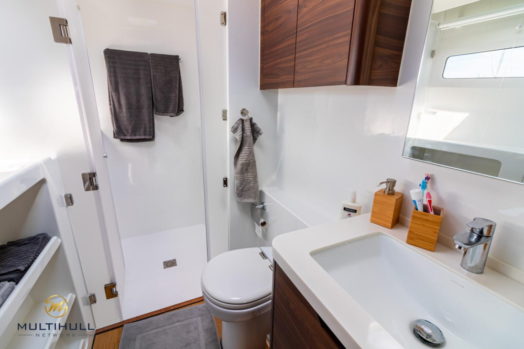
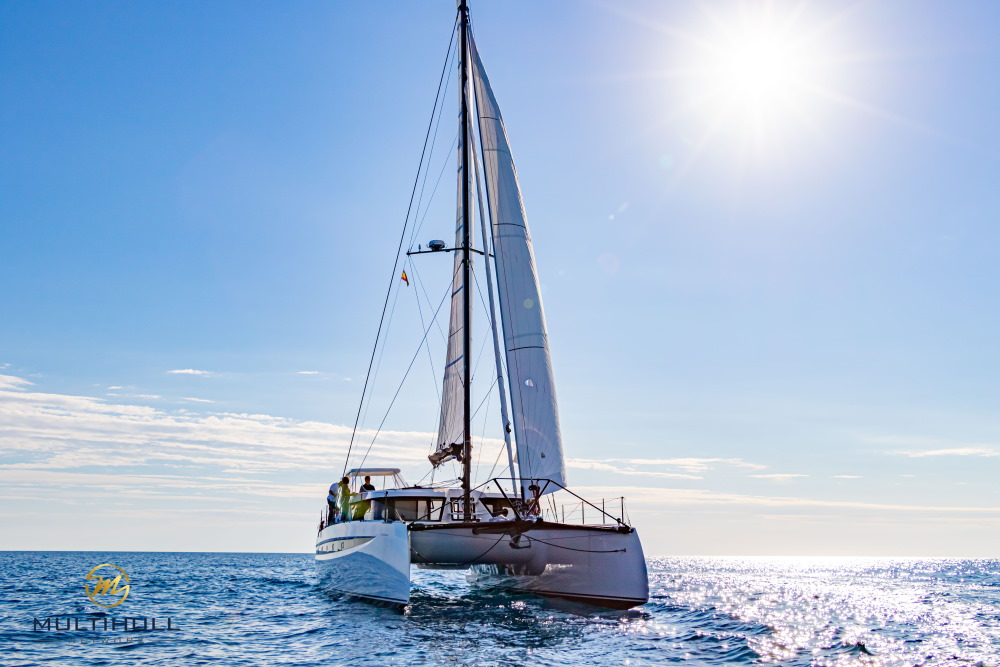
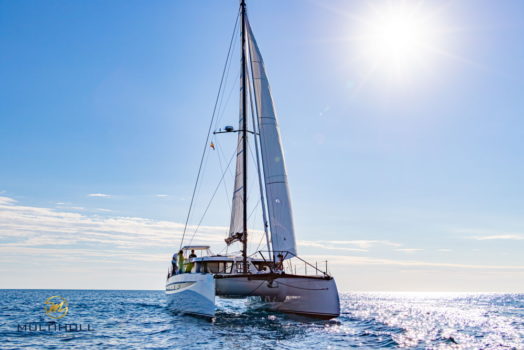
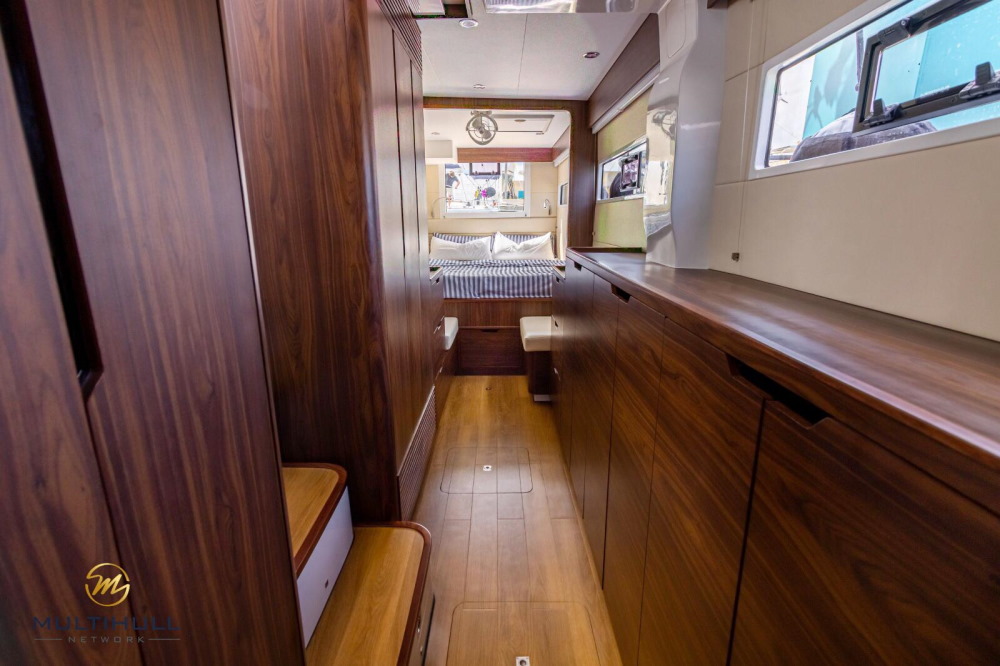
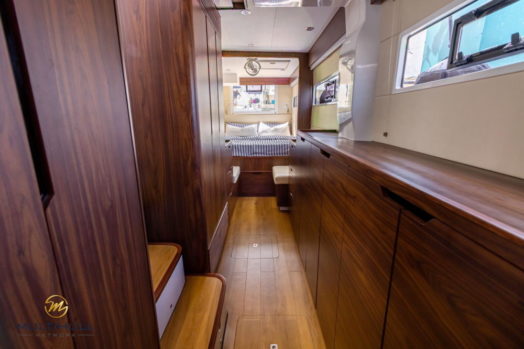
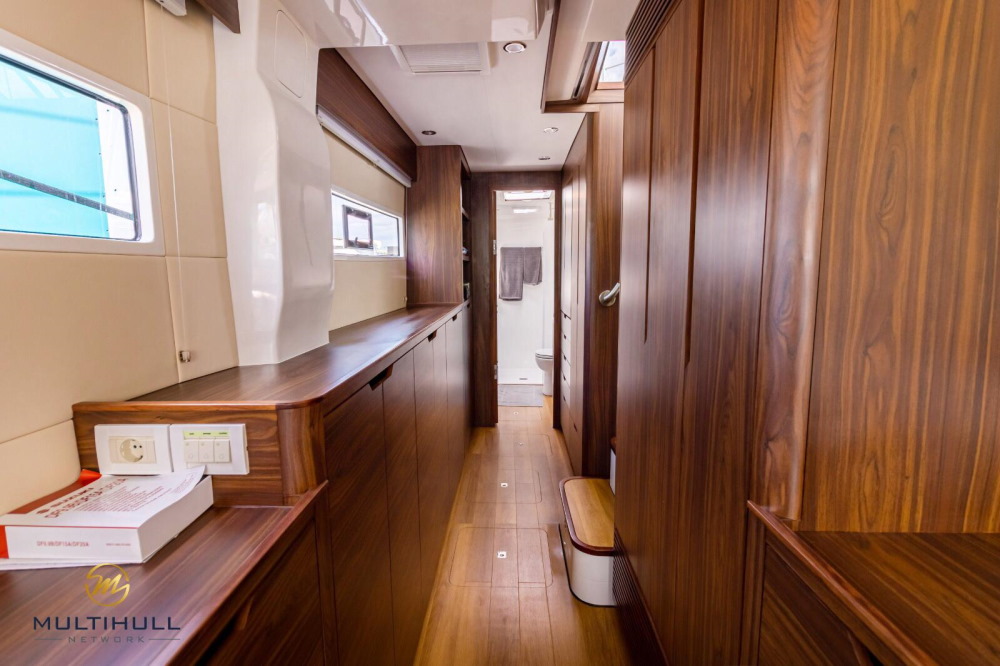
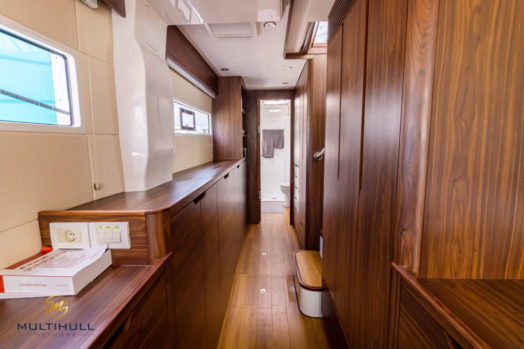
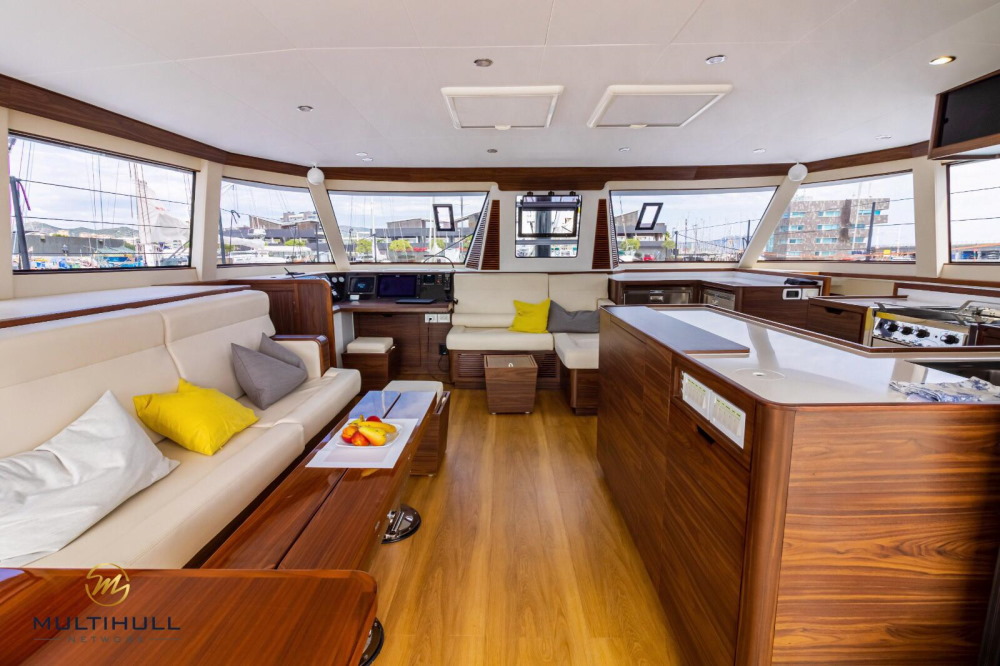
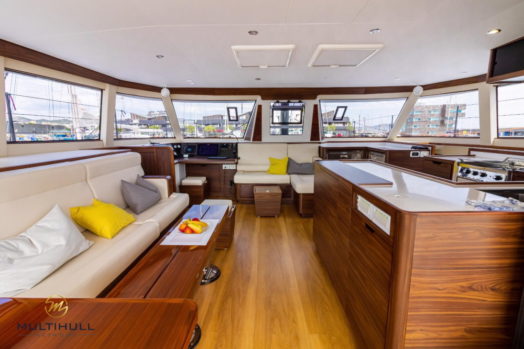
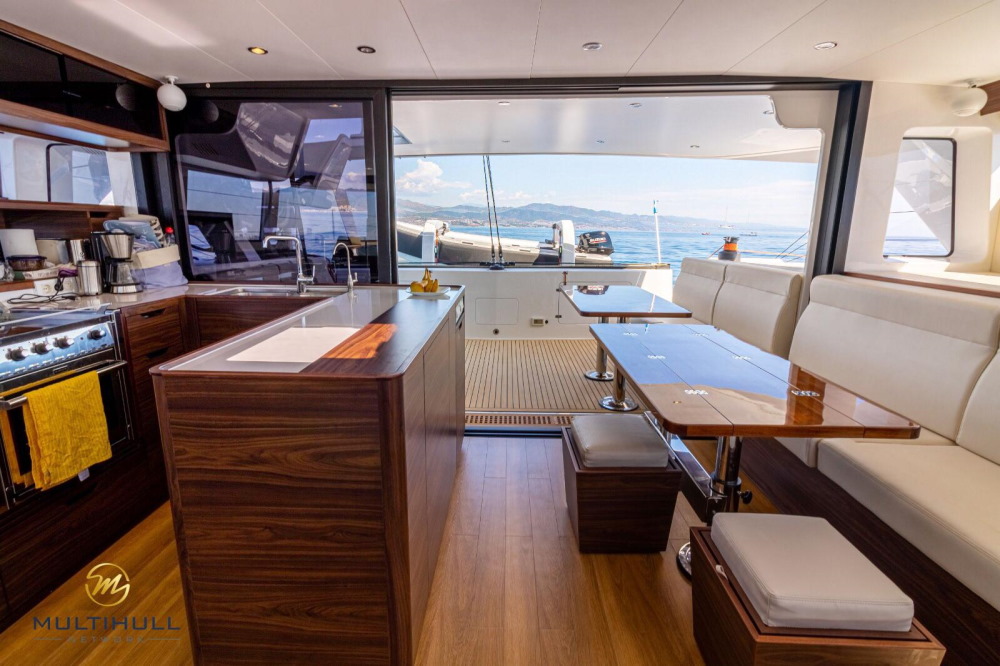
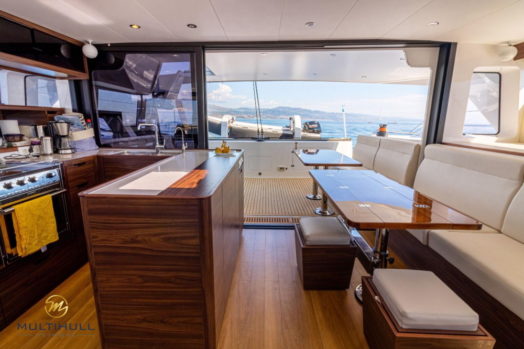
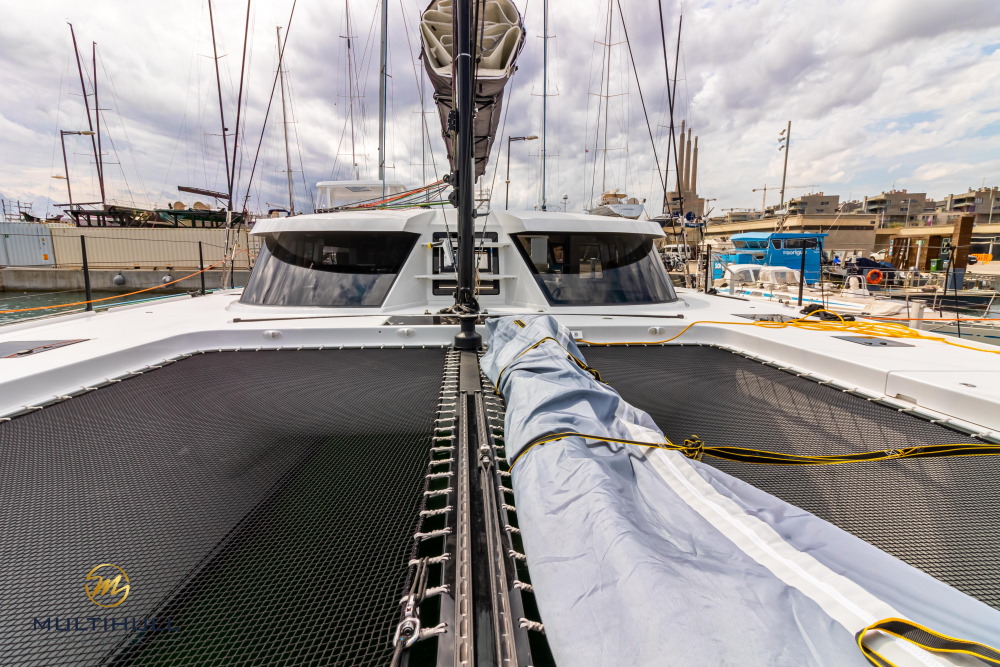
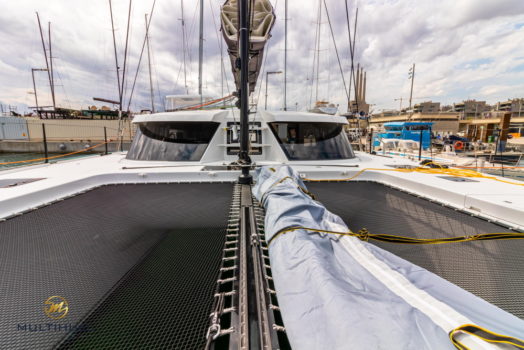
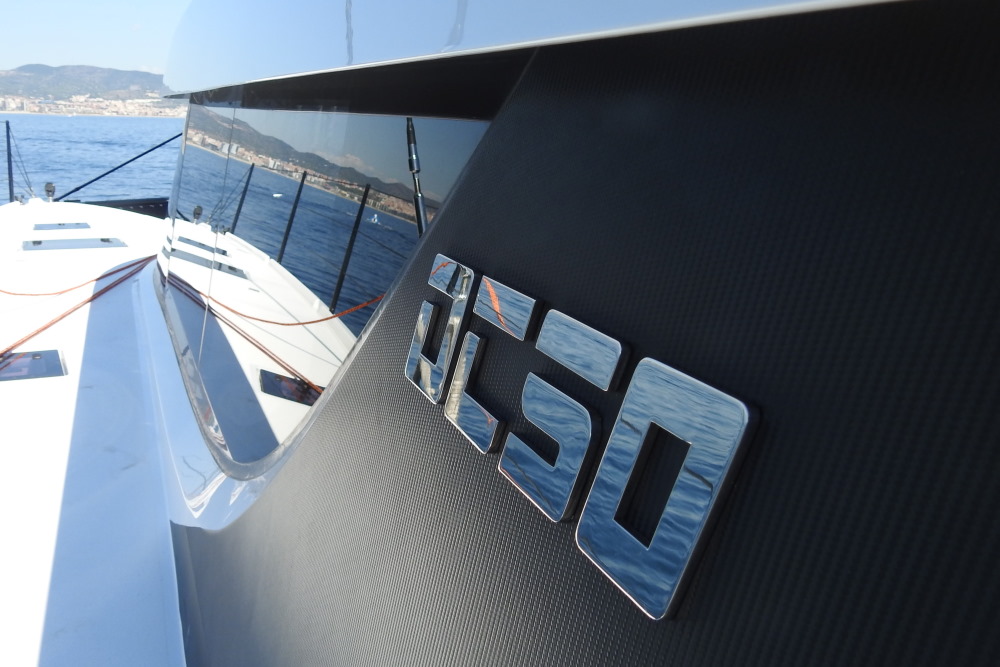
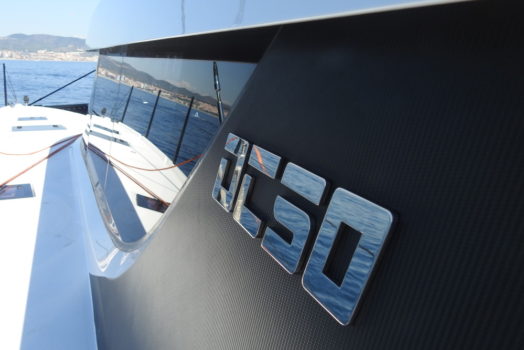
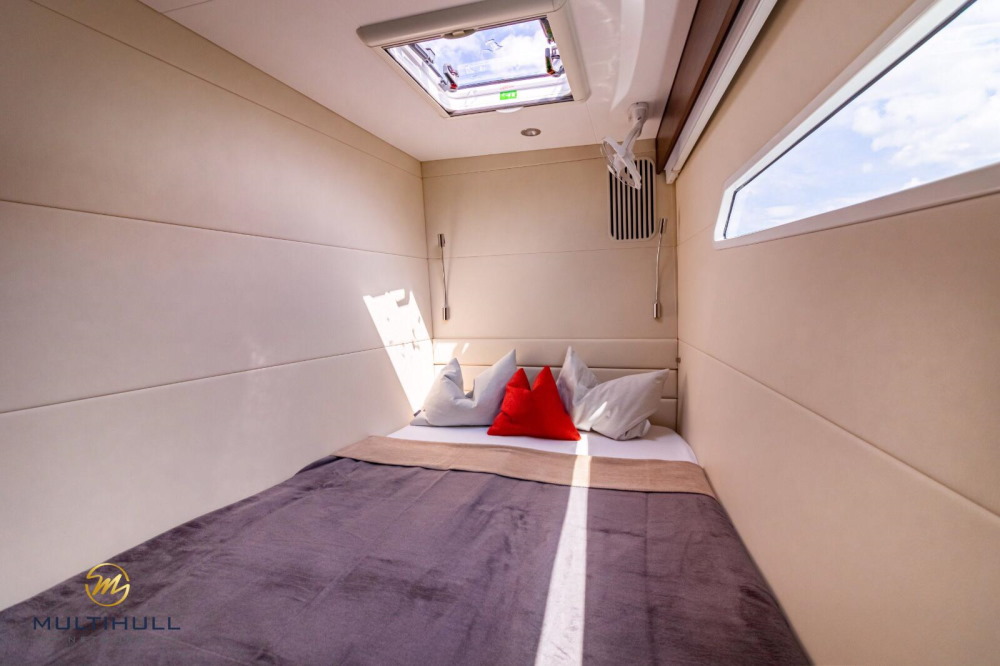
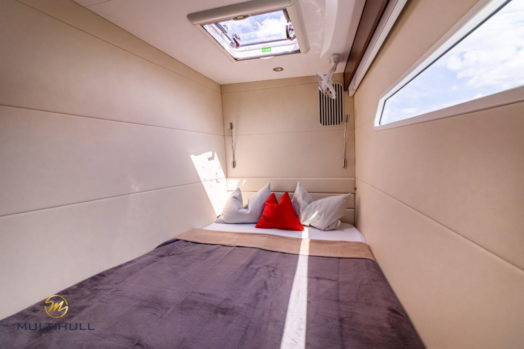
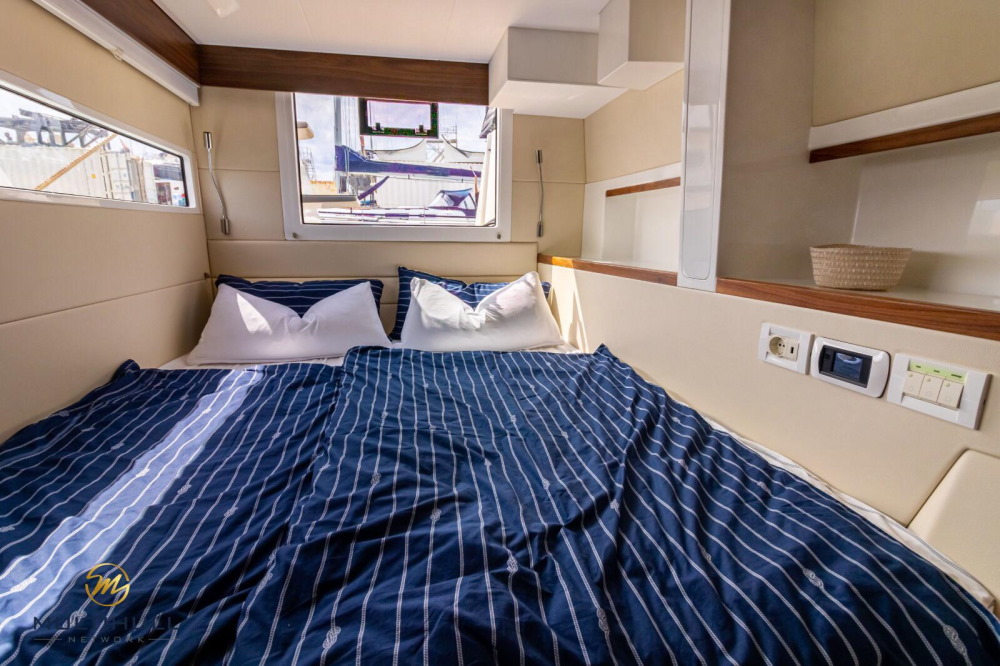
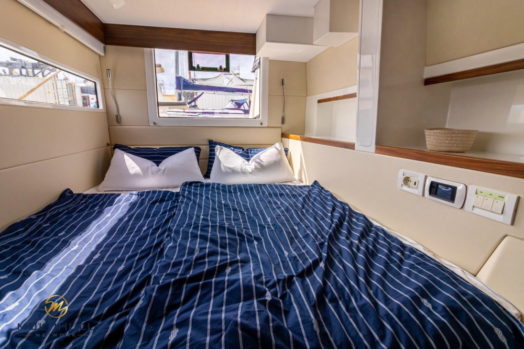
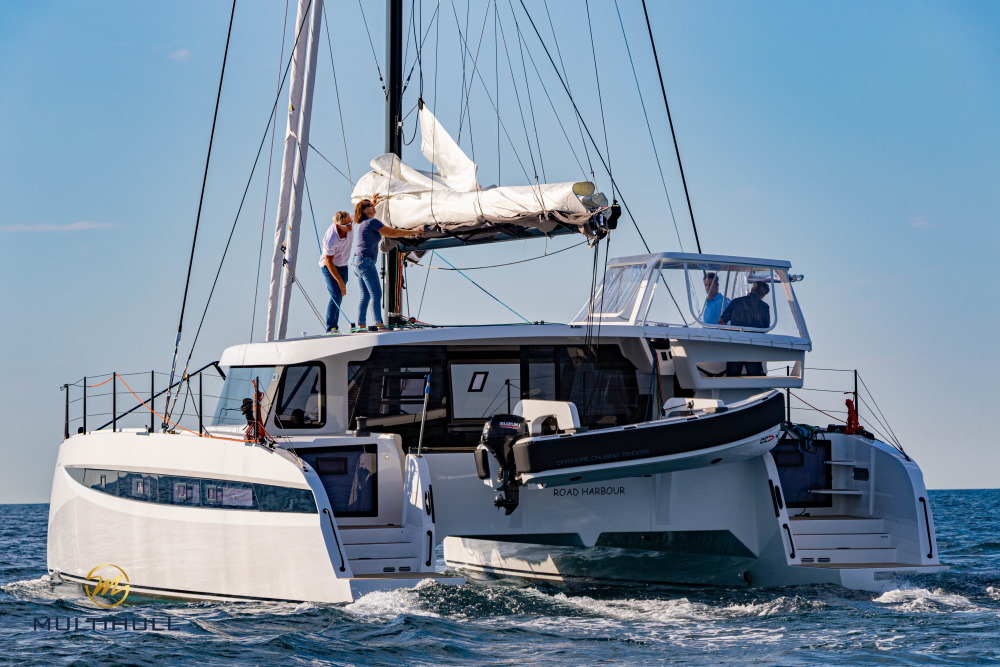
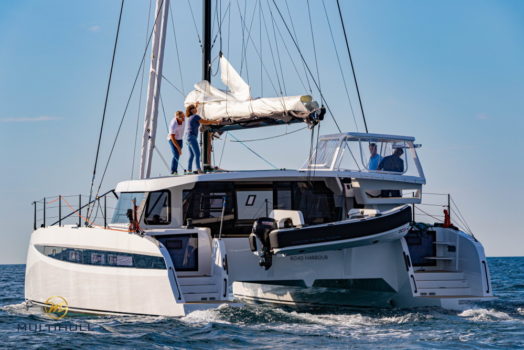
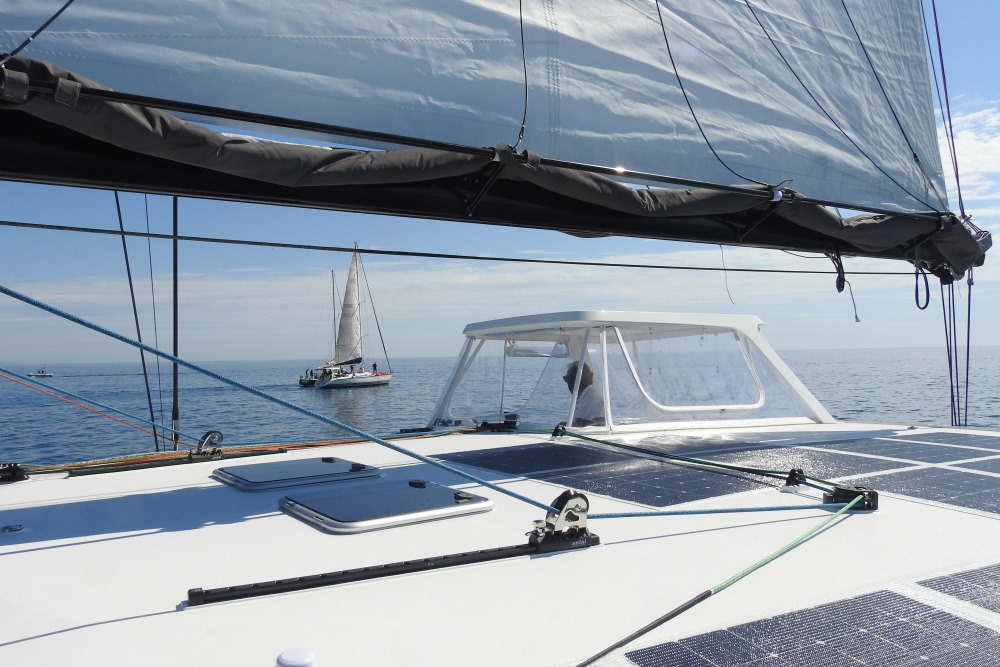
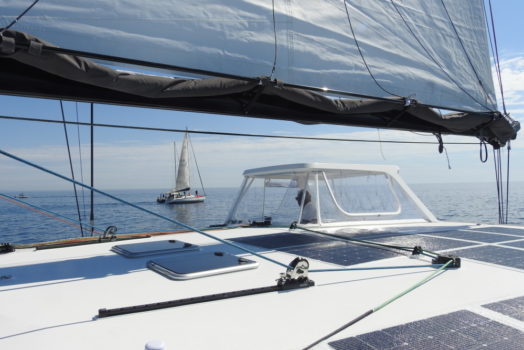
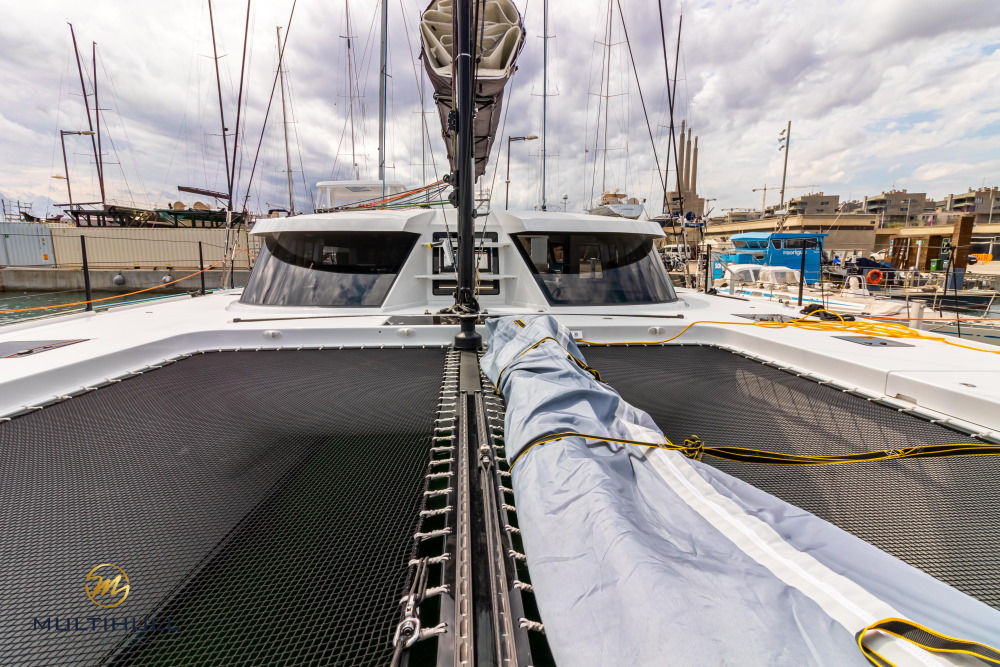
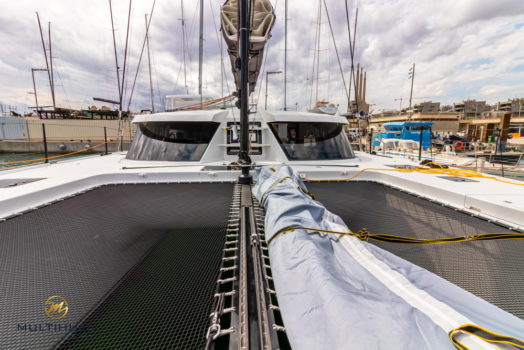
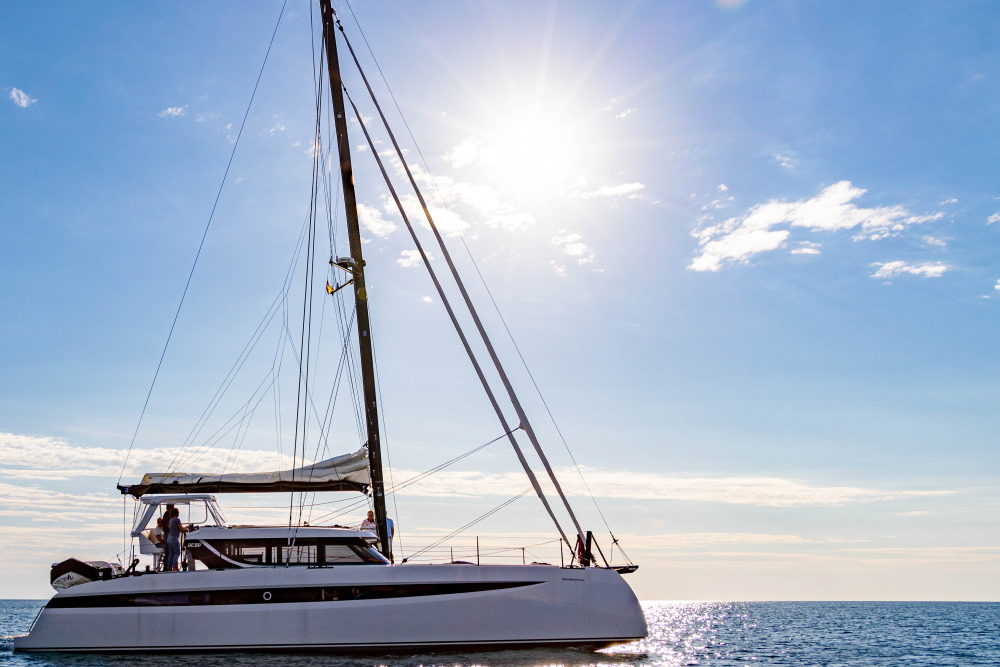
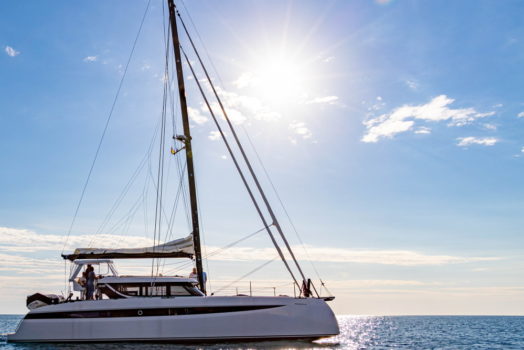
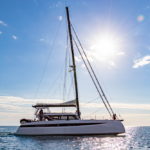
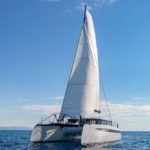
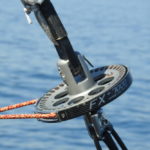
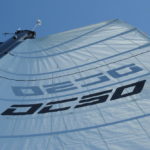
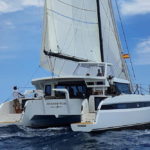
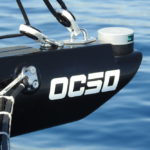
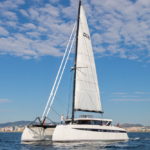
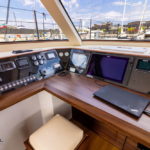
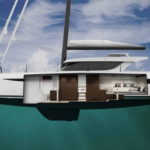
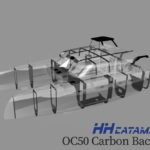
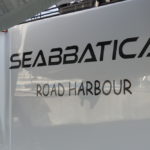
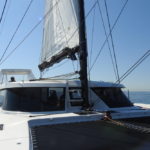
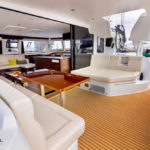
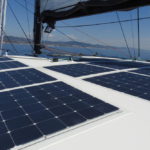
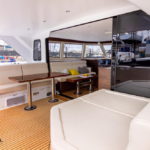
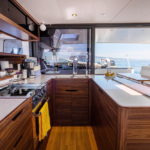
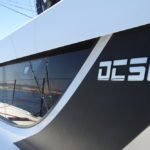
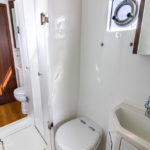
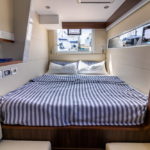
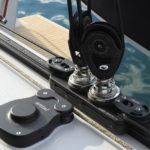
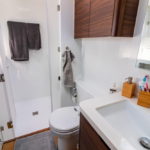
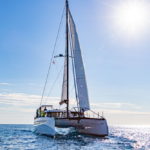
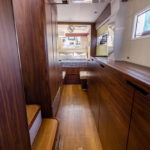
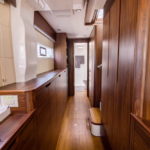
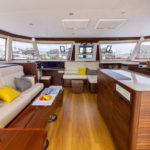
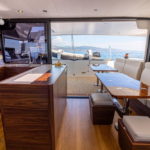
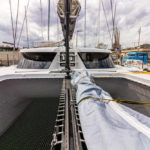
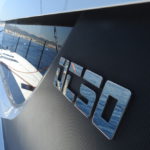
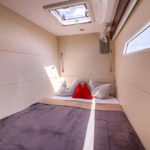
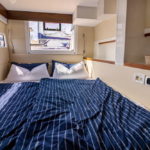
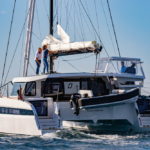
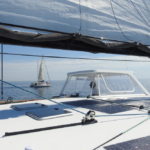
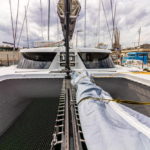
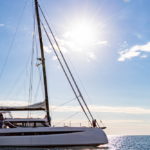
 Where do we put the HH OC50 on Katamarans? This Morrelli & Melvin designed yacht is a sister to their high performance yacht, the HH50 and is the first model to come out of the Ocean Series line.
Where do we put the HH OC50 on Katamarans? This Morrelli & Melvin designed yacht is a sister to their high performance yacht, the HH50 and is the first model to come out of the Ocean Series line. With the OC50, HH have developed a tough, fast, luxurious ocean cruiser that has many of the features from the high performance HH range at a lower cost and with simpler systems for a couple more interested in cruising fast than winning yacht races.
With the OC50, HH have developed a tough, fast, luxurious ocean cruiser that has many of the features from the high performance HH range at a lower cost and with simpler systems for a couple more interested in cruising fast than winning yacht races. Powered Like an HH50
Powered Like an HH50 High Quality Finish and Fittings
High Quality Finish and Fittings The high quality finish continues in the hulls with all the cabinetry cored to reduce weight. In Seabbatical, the #1 hull, the port side is the Owner´s Hull with a light spacious cabin aft (check out the picture book window at the end of the master berth) and a full size head and shower room forward.
The high quality finish continues in the hulls with all the cabinetry cored to reduce weight. In Seabbatical, the #1 hull, the port side is the Owner´s Hull with a light spacious cabin aft (check out the picture book window at the end of the master berth) and a full size head and shower room forward.